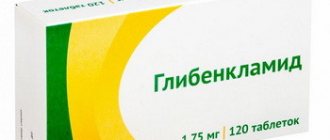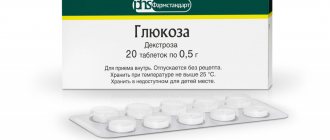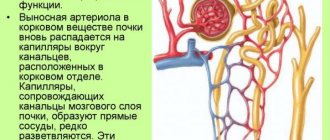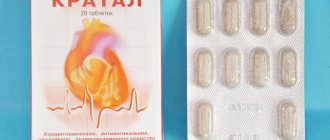We know that maintaining normal blood sugar levels is extremely important and can sometimes be challenging. But do you know how the body works to perform this important function? The hormone glucagon regulates carbohydrate metabolism and plays a major role here.
Glucagon functions when blood glucose levels become too low. Glucagon works in tandem with insulin to ensure that the body maintains enough blood glucose to provide adequate energy levels.
Unfortunately, these two important hormones do not always work properly, and sometimes their production stops altogether. This can lead to serious health problems if not corrected.
Compound
- 1 ampoule 666 of the drug Glucagon contains 1 mg of glucagon hydrochloride and 49 mg of lactose ;
- 1 ampoule 667 of the above drug contains 1 mg of glucagon hydrochloride , 1 ml of 1.6% glycerol with 2% phenol as a preservative;
- 1 ampoule 668 of the above drug contains 1 mg of glucagon hydrochloride and 140 mg of lactose ;
- 1 ampoule 669 of the above drug contains 10 mg of glucagon hydrochloride and 1 ml of 1.6% glycerol with 2% phenol .
What is glucagon and how does it work
Glucagon (not to be confused with glycogen) is a pancreatic hormone that promotes the release of glucose from the body's reserves.
Insulin antagonist. During hypoglycemia, glucagon, in combination with stress hormones, stimulates the release of glucose from stores, and sugar levels rise. But the body does not always manage to work on time: some diabetics are familiar with severe hypoglycemia (hereinafter: TG). To bring a person out of the TG state, a special glucagon preparation for injection was developed.
Pharmacodynamics and pharmacokinetics
Glucagon is a product containing the biosynthetic equivalent of human Glucagon, both options are identical in structure.
Pharmacodynamics
Glucagon is a hormone that mobilizes liver glycogen, which in turn is released as glucose into the blood. Glucagon is not effective in treating liver glycogen The effect of the hormone Glucagon is insignificant in patients who have not eaten for a long period of time, in persons with chronic hypoglycemia, adrenal insufficiency or alcoholic hypoglycemia.
Also, the function of Glucagon is to stimulate the secretion of catecholamines . In pheochromocytoma , it can cause the release of excessive amounts of catecholamines , leading to a rapid increase in blood pressure. Inhibits the tone and weakens the peristalsis of the smooth muscles of the digestive tract.
Pharmacokinetics
It is broken down by enzymes in organs and blood plasma. The liver and kidneys have a decisive influence on the clearance of the hormone. The half-life is 4-5 minutes. When administered intravenously, the effect begins to be recorded within a minute after administration. The duration of action ranges from 5-20 minutes.
After intramuscular administration, the onset of action is noticeable within 7-15 minutes and can last up to 40 minutes. When treating severe forms of hypoglycemic conditions , an effect on glucose is expected on average 10 minutes after use.
Directions for use and dosage
According to the instructions, Glucagon is intended for subcutaneous, intramuscular or intravenous administration.
Glucagon dosage:
- For hypoglycemia in adults and children weighing more than 20 kg - 0.5-1 mg; with a weight of less than 20 kg - 0.5 mg (or 20-30 mcg per kilogram of weight). Within 15 minutes after the first administration of the drug, it can be administered 1-2 more times in the same dosage;
- When conducting a stomach examination - 2 mg intramuscularly or 0.5 mg intravenously;
- When conducting a colon examination - 10 minutes before the start of the procedure, 2 mg intramuscularly;
- For intoxication with beta-blockers - 5-150 mcg per kilogram of body weight intravenously, and then intravenously drip (rate 1-5 mg/h);
- In case of intoxication with BMCC - 2 mg intravenously. Maintenance doses of Glucagon are selected depending on the patient’s condition individually;
- For obstruction of the esophagus by foreign bodies - 0.5-2 mg intravenously. After 10-12 minutes, the drug can be re-administered.
Before administration, the lyophilisate must be dissolved with the solvent supplied with it, or with sterile water for injection (when administered in doses of more than 2 mg).
The use of Glucagon in a concentration of more than 1 mg/ml is not permissible.
Side effects
The most common undesirable effects are vomiting and nausea, especially when using doses above 1 mg or when administering the drug more quickly (up to 1 minute). hypoglycemia may occur .
- immune reactions: hypersensitivity reactions up to anaphylactic shock ;
- reactions from the digestive system: nausea, vomiting, abdominal pain .
Glucose metabolism disorders
Impaired glucose metabolism occurs when the body is unable to process sugar into energy. People need to maintain normal blood sugar levels to nourish the central nervous system.
The most common condition that interferes with the body's ability to maintain normal blood glucose levels is diabetes.
Insulin and glucagon are not produced or released properly in diabetics. This can lead to dangerously high blood glucose levels.
There are several types of diabetes that affect insulin and glucagon levels, including:
- Type 1 diabetes: A less common form of diabetes in which the immune system destroys the cells that produce insulin, so the hormone is not produced by the body itself and must be taken externally. Type 1 diabetes usually causes more severe diabetes symptoms, and symptoms usually develop earlier and at a younger age than type 2 diabetes.
- Type 2 diabetes : This is when your body produces insulin, but your cells don't respond to it properly. Type 2 diabetes causes high blood glucose levels because insulin cannot take it out of the blood for energy.
- Prediabetes: Symptoms of prediabetes occur when blood glucose levels are above normal but below a certain threshold for diabetes. It is considered a "risk condition" and can usually be prevented through lifestyle and diet changes. Prediabetes is also preceded by metabolic syndrome and insulin resistance.
- Gestational diabetes : Diagnosed between 24 and 28 weeks of pregnancy and occurs when a pregnant woman's blood sugar levels are too high.
Two situations that can occur when the hormones insulin and glucagon do not function properly:
Hypoglycemia . Low blood glucose can result from fasting, excessive exercise, and people with diabetes inadvertently taking too much insulin or glucose-lowering medications. Signs of hypoglycemia include:
- hunger
- restlessness and trembling
- sweating
- dizziness
- headache
- muscle weakness
- brain fog
Hyperglycemia . High blood glucose occurs when the body does not produce enough insulin or cannot use it properly. This occurs in diabetic patients and people with hormonal imbalances. Symptoms usually include:
- increased thirst
- frequent urination
- problems with concentration
- blurred vision
- headache
- weakness
- numbness of the limbs.
Interaction
The action of Glucagon is antagonistic to the action of insulin .
During treatment with beta-blockers, administration of the drug can lead to severe tachycardia and increased blood pressure.
When used simultaneously with Indomethacin, the drug may lose its ability to increase blood glucose
When used together with Warfarin, it may enhance its effect.
Indications for use
According to the instructions, Glucagon is used for:
- For hypoglycemia;
- In hypoglycemic coma;
- With obstruction of the esophagus by foreign bodies;
- As shock therapy in psychiatric patients;
- In case of intoxication with beta-blockers and BMCC;
- As an additional diagnostic tool when performing x-rays of the stomach and intestines, MRI, computed tomography, angiography, hysterosalpingography, and diagnosing bleeding from the small intestine with technetium-labeled erythrocytes.
Storage conditions
- Do not allow the drug to freeze so as not to accidentally damage the syringe with the solvent it contains;
- store at temperatures up to 25 °C only in the original packaging;
- store in a place inaccessible to light;
- The drug prepared for use should be immediately administered immediately after preparation. Do not leave the prepared solution for later use;
- keep away from children;
- never consume after the expiration date indicated on the package.
special instructions
When using Glucagon, keep in mind that:
- During treatment, plasma glucose levels should be monitored;
- If the patient’s body does not respond to the administration of glucagon, then dextrose should be administered intravenously;
- In patients with insulinoma, intravenous administration of the drug first causes hyperglycemia and then hypoglycemia;
- An overdose of the drug is manifested by nausea, diarrhea, “uncontrollable” vomiting, dehydration, hypokalemia, increased blood pressure, and tachycardia. In such cases, the patient requires symptomatic treatment. In case of “uncontrollable” vomiting, it is necessary to rehydrate and replenish potassium losses;
- Patients who develop symptoms of hypoglycemia after administration of the drug should be given dextrose (by any route);
- Patients with pheochromocytoma may experience a sudden and severe rise in blood pressure. In such situations, intravenous administration of 5-10 mg of phentolamine is required;
- Patients with diabetes mellitus should strictly follow the doctor's recommendations to prevent the development of hypoglycemic conditions;
- The drug is ineffective for hypoglycemia due to a low-carbohydrate diet, adrenal insufficiency and chronic hypoglycemia, since it acts in the presence of glycogen in the liver;
- The drug solution prepared on the basis of the supplied solvent can be stored for no more than 48 hours;
- The solution prepared on the basis of water for injection cannot be stored and should be used immediately.
- The administration of Glucagon during the use of beta-blockers can cause the development of tachycardia and an increase in blood pressure;
- The drug enhances the effect of indirect coagulants and reduces the effect of insulin.
Glucagon injections - why, to whom and how?
Glucagon is a hormone of the pancreas, its action is opposite to that of insulin, that is, it increases blood glucose levels. (For more information about the mechanism of action of glucagon, see the article “Hormones that regulate blood glucose levels”).
Who needs glucagon injections?
A person with diabetes mellitus who experiences severe hypoglycemia.
Severe hypoglycemia is hypoglycemia that requires the help of another person, namely, if a person with diabetes has lost consciousness, has convulsions, or is unable to drink or eat the foods necessary to relieve hypoglycemia (more information about means to relieve hypoglycemia in the section “Hypoglycemia” ). In this case, an injection of glucagon can be given to stimulate the breakdown of glycogen in the liver, which will lead to an increase in blood glucose levels.
Who can get a glucagon injection?
In order to give a glucagon injection, you do not need to have a medical background; anyone can administer glucagon, since glucagon is administered subcutaneously or intramuscularly. If we are talking about children with diabetes, then it is desirable that not only parents be able to administer glucagon, but also tell and train kindergarten teachers or school teachers to do so.
What does glucagon look like?
The glucagon registered for use in our country is called GlucaGen 1 mg HypoKit from Novo Nordisk (Figure 1 and 2).
Fig. 1 GlucaGen 1 mg HypoKit (www.kidswithdiabetesinsouthport.co.uk)
Fig. 2 GlucaGen 1 mg HypoKit (www.rlsnet.ru/)
It includes:
- Powder or porous mass, which is actually the active substance (glucagon)
- Syringe containing solvent
- Orange pencil case with instructions
For a long time, scientists have been working on creating liquid glucagon so that people who see their loved ones during hypoglycemia do not have to think about how to mix glucagon with a solvent and then draw the required amount of glucagon into a syringe. The stable soluble form of glucagon G-pen from Xeris is currently undergoing phase 3 clinical trials in the United States.
How to give a glucagon injection?
Glucagon can be administered subcutaneously like insulin and can also be administered intramuscularly. The dose of glucagon required to relieve hypoglycemia is calculated at 0.1-0.2 mg per 10 kg of body weight. If you doubt the correct dose, it is better to inject a little more than less. Glucagon is not dangerous in case of overdose. The instructions for GlucaGen 1 mg HypoKit (registered for use in our country) provide a more simplified scheme for calculating the dose of glucagon: adults and children weighing more than 25 kg or older than 6–8 years are administered 1 mg (1 ml, mark 1/ on the syringe). 1). Children weighing less than 25 kg or younger than 6–8 years are administered 0.5 mg (0.5 ml, 1/2 mark on the syringe) subcutaneously or intramuscularly. The action of glucagon begins in about 10 minutes and lasts for 30-60 minutes. The effect will be the same after both subcutaneous and intramuscular injection, so it doesn’t matter how deep you insert the needle. The main thing to avoid intradermal injections is when, when glucagon is administered, a bubble is formed, similar to the Mantoux reaction.
Preparation of solution for injection (www.grls.rosminzdrav.ru)
1. Remove the plastic cap from the bottle and the protective needle tip from the syringe. Puncture the rubber stopper of the bottle containing GlucaGen® with a needle and inject all the liquid in the syringe into the bottle.
2. Without removing the needle from the bottle, carefully shake the bottle until GlucaGen® is completely dissolved and a clear solution is formed.
3. Make sure the piston is pushed all the way forward. Draw up the entire solution into a syringe. Care must be taken to ensure that the plunger does not come out of the syringe.
4. Release the air from the syringe and inject.
Dispose of any unused product and packaging in accordance with local regulations.
Don't forget to check the expiration date of your glucagon! If the expiration date has passed, do not use this glucagon to treat hypoglycemia. But you can use it for training, and show it how to mix glucagon correctly, the main thing is not to inject it.
It can be quite difficult to mix glucagon the first time in a situation where you really need it. To avoid panic at such a moment, check the contents of the pencil case and read the instructions as soon as you purchase glucagon and bring it home. You can mark on the syringe with a marker the amount of glucagon that will need to be collected so that you do not worry about it in a stressful situation. You can also write the procedure in your own words on a piece of paper and put it in your pencil case with glucagon.
How to evaluate the effect of glucagon injection?
After administering glucagon, wait 10-15 minutes for the person with diabetes to come to their senses. If he is still unconscious after 10-15 minutes, then call an ambulance. However, if a person has regained consciousness, feels well and has a normal blood glucose level when the ambulance arrives, then he does not need hospitalization.
It is not recommended to eat for at least 30 minutes after glucagon administration, as nausea or even vomiting may occur. This is a relatively common side effect, especially if you eat a large amount of food at once. Wait 30 minutes, but then be sure to eat a meal containing slow-release carbohydrates to keep your glucose levels at normal levels until your next meal.
If the glucagon injection does not work, then there is no point in reintroducing glucagon. If the blood glucose level does not rise after the administration of glucagon, then there are no glycogen reserves in the body, therefore, glucagon cannot exert its effect. This can happen, for example, after intense physical training or if there has recently been hypoglycemia and the body has not yet had time to restore glycogen reserves.
Glucagon is an insulin antagonist. It is logical to assume that people without diabetes never have high levels of these two hormones at the same time. Insulin is secreted when blood glucose levels are high, and glucagon when blood glucose levels are low. If hypoglycemia is caused by an excess dose of insulin, then glucagon will have less effect than if hypoglycemia is caused by insufficient food intake.
Some people with diabetes, especially children and teenagers, feel unwell after an episode of severe hypoglycemia, even if glucagon is not given. One explanation for this is the synthesis of its own glucagon by the pancreas, which can also lead to a feeling of nausea.
New soluble form of glucagon
Fortunately, the race to develop the next generation of glucagon to replace the powder + syringe kit has paid off, and we are starting to see some progress in clinical trials. Manufacturers promise to release soluble glucagon in the form of syringe pens on the world market as early as 2015. However, it is not known when this product will be certified in our country.
The concept is not new; Products such as the promising GlucaPen and a freeze-dried version of GlucaGo have created a stir over the past few years, but they have either been stuck in limbo or disappeared completely.
There are currently a number of companies in the race to create a stable, soluble form of glucagon:
- Biodel is developing its soluble form of glucagon;
- Latitude Pharmaceuticals created the Nano-G formula;
- Enject continues to develop GlucaPen;
- Xeris Pharmaceuticals is developing a new line of glucagon products that some experts say are the best.
Last year, the Helmsley Foundation gave Xeris a nearly $1 million grant to develop a stable, soluble form of glucagon, which followed a $1,140,000 grant from the US National Institutes of Health. And last summer, JDRF teamed up with Xeris and Latitude to focus on creating a pump form of glucagon for use in artificial pancreas research.
This is what Xeris is working on (Figure 3):
- G-Pens are auto-injector pens containing a single dose of 200 units of their company's stable glucagon formula.
- G-Pen Min contains the same stable glucagon formula, but it is designed to deliver smaller, multi-doses that can treat mild hypoglycemia.
- G-Pump glucagon – for pumps with glucagon infusion function for low glucose levels. There are three lines of this glucagon: glucagon, which can be used in insulin and glucagon pumps working with a continuous glucose monitoring system (CGMS) to create an “artificial pancreas”; glucagon, which can only be used in glucagon pumps; and glucagon, which can be used in insulin and glucagon pumps where it will be dosed evenly over 24 hours, such pumps can be used, for example, for congenital hyperinsulinism.
Fig.3 Glucagon from Xeris (www.diabetesmine.com)
The key thing about the two pens is that they cut the traditional process of administering glucagon, by mixing it and a solvent, from nine steps to three! You simply remove the cover, place the pen on your skin, and press the button!
Xeris completed a phase 2 study of G-Pen in the fall of 2013 at the Texas Diabetes Institute in San Antonio under the direction of Dr. Ralph DeFronzo. Tests have shown that at room temperature, Xeris glucagon has “high stability” over 18 months and 92% pure glucagon after 18 months, making it comparable to glucagon currently on the market.
Phase 3 research has been ongoing since late 2014, and FDA submission of the new product will likely occur in 2015.
Meanwhile, the G-Pen Mini is also undergoing research at Baylor College of Medicine in Houston, led by Dr. Morey Haymond, who wrote a scientific paper on a mini-dosing algorithm for reversing hypoglycemia in children with diabetes.
Similar drugs:
- Adrenaline (Adrenaline) Solution for injection
- Adrenaline Substance-powder
- Adrenaline Solution for topical use
- GlucaGen 1 mg HypoKit Lyophilisate for solution for injection
- Humatrope Lyophilisate for the preparation of solution for subcutaneous administration
- Humatrope Lyophilisate for solution for injection
** The Drug Directory is intended for informational purposes only. For more complete information, please refer to the manufacturer's instructions. Do not self-medicate; Before starting to use the drug Glucagon, you should consult a doctor. EUROLAB is not responsible for the consequences caused by the use of information posted on the portal. Any information on the site does not replace medical advice and cannot serve as a guarantee of the positive effect of the drug.
Are you interested in the drug Glucagon? Do you want to know more detailed information or do you need a doctor's examination? Or do you need an inspection? You can make an appointment with a doctor - the Euro lab is always at your service! The best doctors will examine you, advise you, provide the necessary assistance and make a diagnosis. You can also call a doctor at home . Euro lab clinic is open for you around the clock.
** Attention! The information presented in this medication guide is intended for medical professionals and should not be used as a basis for self-medication. The description of the drug Glucagon is provided for informational purposes only and is not intended for prescribing treatment without the participation of a doctor. Patients need to consult a specialist!
If you are interested in any other drugs and medications, their descriptions and instructions for use, information about the composition and form of release, indications for use and side effects, methods of use, prices and reviews of drugs, or you have any other questions and suggestions - write to us, we will definitely try to help you.





